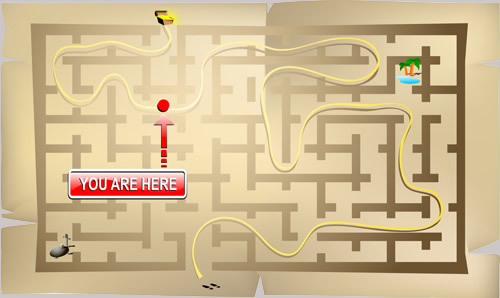A bit of background before I start: I live outside of Washington, DC, but rarely visit, so I don’t know the city very well. I did (and still do) visit the city on occasion.
When the group was still active, I used to attend the meetings of the Software Psychology Society. Our meetings were held monthly, during the workday, at George Washington University in DC. To save time and the aggravation of parking, I always took the subway to a Metro stop right outside the GW Marvin Center. This went on for several years. Since it was a workday, attendance amounted to a subway trip to DC, a quick meeting, and back to the subway for the trip back to the office.
During the same period of time, I had a friend who lived in the Georgetown neighborhood in DC. He didn’t have a car but did have a parking spot. When I visited him, I drove my car, since neither time nor parking was an issue. We would usually walk within Georgetown for dinner.
One day, while attending the Software Psychology Society meeting, as I went to leave DC, I found the Metro stop outside of the Marvin Center was closed. I had to walk a few blocks to the next Metro stop. Suddenly I discovered, to my surprise, that my friend lived only several blocks from the Marvin Center. Why had I never noticed this? My friend was east of the Marvin Center. Georgetown was east of my friend. The drive to DC showed me the path from my home to my friend’s house, but the ride on the subway from my office to the meetings showed me no information about that trip.

I entered the subway at one location, traveled underground with no real reference point or true sense of direction, and then emerged at my destination. The destination did not provide me with enough information to orient me within the city. But now, having made the connection, my ability to traverse DC had expanded. If I wanted to, I was certain I would be able to drive from my office to the Marvin Center, from my home to the Marvin Center, or even between the Marvin Center and my friend.
Driving to DC is the equivalent of navigating a website. You follow defined navigational options to get where you need to go. You learn during the trip. Hopefully you can reverse your recall of the path you took to get back home. And if you don’t wait too long between trips, you can probably successfully repeat that trip again. The subway is the equivalent of a hyperlink from a site search, or from a search engine like Google. You arrive at the destination, but the trip is without a frame of reference.
Because search is such a major part of the web experience, it is incumbent upon website designers to provide this frame of reference upon arrival. This allows a person to recognize both where they are and how they might get there on their own, through navigation. This positional feedback can be provided by indicating the active tab, the active menu, or the combination of both tab and menu.
The total path through a deep site architecture can be shown in breadcrumbs (hence their title). Yet it’s surprising how often these are left off of a site design altogether, or how often the positional feedback shows one or two levels and then stops. In my classes on usability testing, I often suggest a task for student teams to try to evaluate the positional feedback: have the participant locate an item using search and then try to find the same item again through navigation.
Next time you feel like you’re lost in hyperspace, look around and see if that’s the issue. Maybe the clues are there, but too subtle. And if you’re designing, try that dual task yourself to make sure you have enough positional feedback. Users have enough to think about, and no one likes the feeling of being lost.



